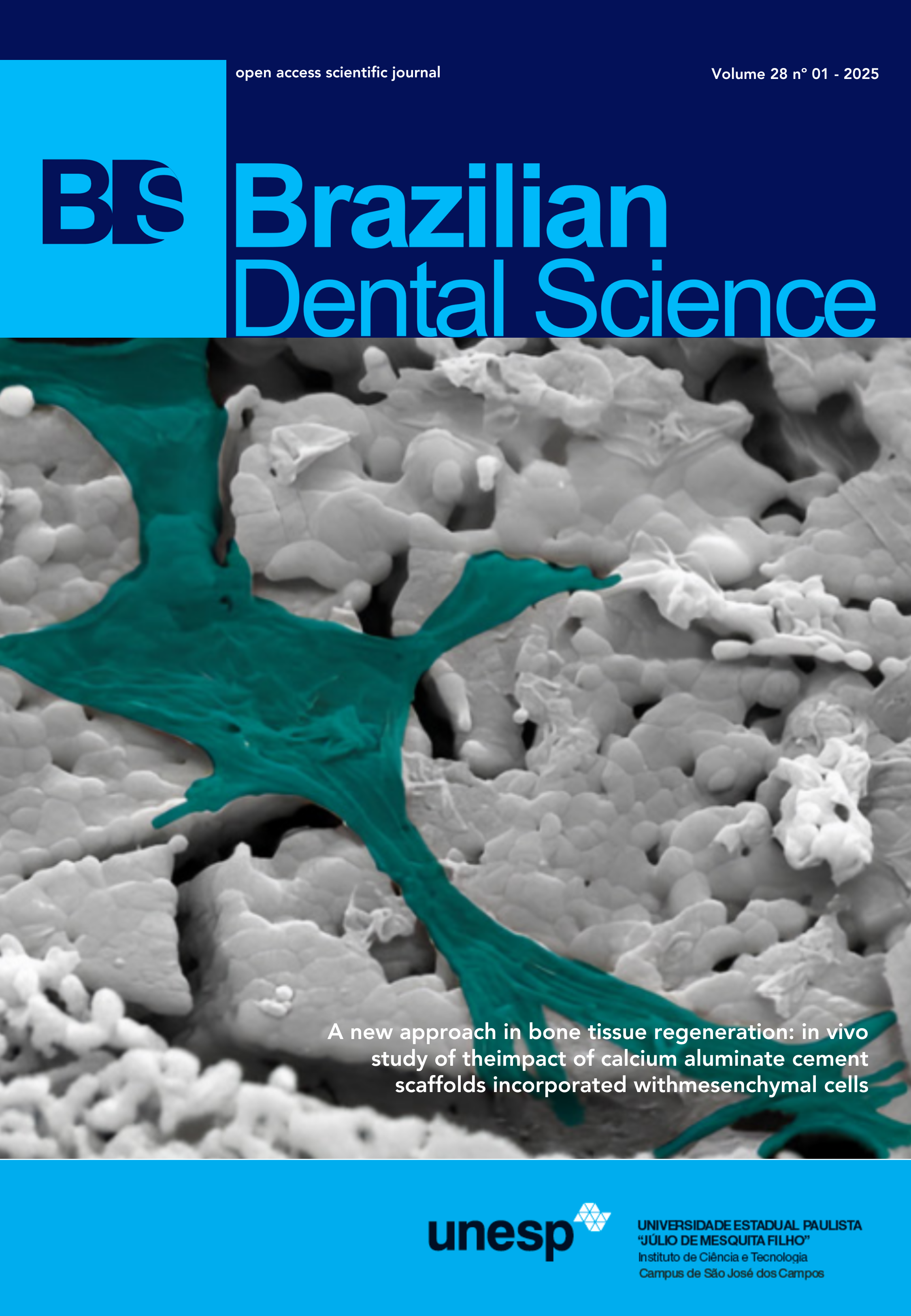Clinical and radiographic success following pulpectomy of primary molars with rotary instrumentation versus manual instrumentation: a 12-month randomized clinical trial
DOI:
https://doi.org/10.4322/bds.2025.e4538Abstract
Objective: This 12-month randomized clinical trial aimed to estimate the postoperative pain, quality of obturation and clinical and radiographic success in pulpectomy of primary molars using Fanta baby rotary files versus manual K-files. Material and Methods: This randomized clinical trial included 46 lower second primary molars in 4-6 years old children. In intervention group, canals were prepared using Fanta baby rotary files, while in control group, manual K-files were used. The postoperative pain was assessed at 12, 24, 48 and 72 hours using modified Wong-baker pain scale. Clinical assessment was carried on 1w, 3, 6, 9, 12 months in terms of tenderness to percussion, mobility, and presence of swelling or fistula; while radiographically was on 1 week, 6 and 12 months using digital imaging technique in terms of size of the radiolucency, no development of new radicular or furcation radiolucency and no pathologic internal or external resorption. The quality of root canal obturation was assessed based on the presence of voids and the extent of the filling. Results: At 12 and 48 hours postoperative pain was significantly lower in the group prepared with rotary files compared with the manual K-files. At 12 months, the clinical success was 82.6% and the radiographic success was 78.3% in both groups. No significant difference was reported between both groups regarding the presence of voids and the extent of filling (p=0.667, p=0.261) respectively. Conclusion: Fanta baby rotary files showed marked reduction in postoperative pain compared to K- files. Regarding clinical and radiographic success, no significant differences were observed in both groups in different follow up intervals. There were no significant differences in obturation quality after one year.
KEYWORDS
Canal obturation; Deciduous teeth; Digital dental radiography; Metapex; Pulpectomy; Root canal therapy; Root canal preparation.
Downloads
Published
How to Cite
Issue
Section
License
Copyright (c) 2025 Brazilian Dental Science

This work is licensed under a Creative Commons Attribution 4.0 International License.
Brazilian Dental Science uses the Creative Commons (CC-BY 4.0) license, thus preserving the integrity of articles in an open access environment. The journal allows the author to retain publishing rights without restrictions.
=================




























